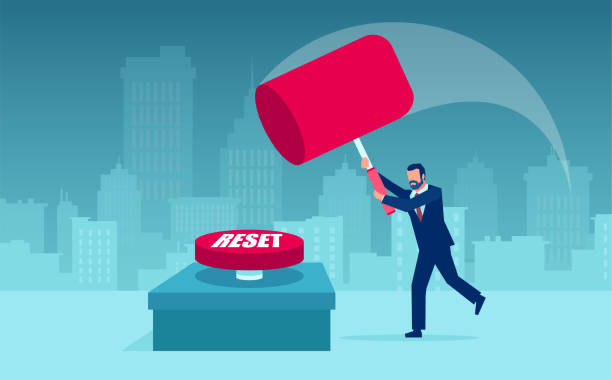Darius Dale recently joined Felix Jauvin on Forward Guidance to break down why the U.S. economy is undergoing a historic paradigm shift—from Wall Street-led globalization to Main Street-driven reindustrialization. If you missed the interview, here are three key takeaways that likely have huge implications for your portfolio:
1) Tariffs Mark the Beginning of a Multi-Year Economic Regime Shift
Darius explains that the Trump administration’s tariffs are not a short-term negotiating ploy, but the cornerstone of a deliberate shift from a K-shaped, globalized economy (“Paradigm A”) to an E-shaped, reindustrialized economy (“Paradigm B”). This transition, inspired by Fourth Turning dynamics, is designed to compress the gap between capital and labor-even if it means short-term economic pain.
Key Takeaway:
Markets are still mispricing the durability and intent behind these policies. Investors expecting a quick policy reversal or return to the status quo risk being caught on the wrong side of a structural transition that favors domestic labor and reindustrialization over corporate profit margins.
2) A Technical Recession Is Likely—But an Actual Recession Isn’t Guaranteed (Yet)
Despite rising fears, Darius argues that the U.S. is more likely headed for a technical recession (two or more quarters of negative growth) rather than an NBER-defined, broad-based recession—at least for now. Strong private sector balance sheets, labor hoarding, and a healthy base rate for corporate profitability suggest the downturn could be shallow initially.
Key Takeaway:
While risk assets may still fall over the next ~two quarters, the likelihood of a full-blown financial crisis is much lower than in past cycles. But should the transition falter or policy missteps compound, downside risk could still reach -30% to -40% on the S&P 500.
3) Only QE and Fiscal Stimulus Can Smooth This Transition
Darius emphasizes that cutting interest rates alone won’t be enough. The Fed must resume some form of quantitative easing (QE) to offset the current global debt refinancing air pocket, rising yields, and negative fiscal shocks from both tariffs and DOGE spending cuts. The now-House-approved-Senate tax cut plan could help, but execution risk remains given the deficit hawks, high-Medicaid-state-Senators, and “SALTY” Republicans in Congress.
Key Takeaway:
Without QE or meaningful fiscal relief, the economy could suffer prolonged stagnation. Investors must be prepared for a bumpy ride, with significant downside if the Fed and Congress fail to act boldly. Persistent above-target inflation mean the Fed may be too slow to respond.

Final Thought: Positioning for the Paradigm Shift
Markets are still adjusting to the scale and seriousness of the paradigm shift underway. What many dismissed as mere political posturing is now revealing itself as a structural realignment—one that challenges decades of globalization, reshapes corporate profit dynamics, and forces both investors and policymakers to reconsider their playbooks. Whether or not you agree with the direction, the implications are undeniable: positioning for the durability of this transition will be the key differentiator in portfolio performance and resilience.
If you are not confident your portfolio is positioned correctly for the evolving macro landscape, partner with 42 Macro for data-driven insights and proven risk management overlays—KISS and Dr. Mo—to help you stay on the right side of market risk.
No catch—just real insights to help you stay ahead in the #Team42 community.
Best of luck out there,
— Team 42


